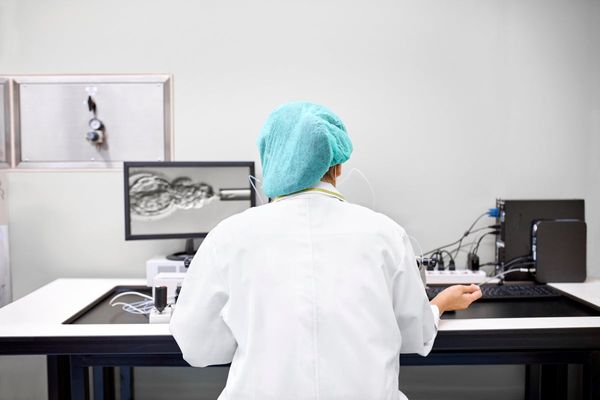
Ask any marshal, photographer or motorsport fanatic of a certain age to name their favourite club racing era and “the 1970s and 1980s” will win hands down. Special/Super Saloons would surely top a sub-poll, for sheer variety and ingenuity of home-builds, the quickest and most spectacular wild caricatures of production cars often hiding outrageous engine transplants and proprietary racer’s suspension. Towards 50 years ago, when the genre was at its height, the crowd following was strong too, with ebullient maestro Gerry Marshall never far from the winner’s rostrum.
Since 2012, the Classic Sports Car Club’s retrospective – embracing the contemporary Modified Sports category, with more restrictive regulations – has rekindled the flame, bringing out some of the wackiest racers ever to emerge from workshops, lock-up garages and literally garden sheds. Revived to offer a competitive home for long-dormant ‘classic’ hardware, it’s bolstered by a ‘modern’ take on the theme with bespoke tubeframe chassis and current power units offering viable options with a Donington/Special GT-type flavour, another category that ebbed away in the early 1990s.
Yes, there are still runaway victories in the mode of Marshall in his Vauxhall pomp, piloting Viva GT, Old Nail (Firenza), Big Bertha (Ventora-Holden/Repco V8) and Baby Bertha – the 500bhp Aussie Formula 5000 engine repackaged as a Firenza clone following a catastrophic brake failure at Silverstone, which reduced its predecessor to scrap in 1974. On occasions, however, notably at Donington Park last summer, when the 5.7-litre Chevrolet-powered Baby Bertha starred but failed to win, the quality of racing in big fields has been impressive.
Two more cars raced by Marshall are among the miscellany due out this year, reprising the big man’s abiding love of the Aston Martin and Vauxhall marques, and of course full-blooded opposite-lock exits from corners, in a shower of shredded rubber. Counter-intuitive to today’s data-honed racers, Marshall’s trademark tyre-frying panache invariably left spectators gasping in admiration at the showman’s talent. They went home happy.
Neither hybrid (in traditional cross-bred sense, no silent electric motors here) is quite what it appears to be, or anything like engineers envisaged when the base cars left their respective factories.

The John Pope Special, debuted in 1974, was the eponymous brainchild of a Hertfordshire farmer who incorporated the 5.3-litre engine, gearbox and suspension of a damaged Aston Martin DBS into a Vauxhall Magnum bodyshell, the de Dion rear end located by trailing links bolted into the Luton steel floorpan. Road-legal, and driven to events, it was a solid midfielder that annexed results when attrition ravaged rivals’ lighter, quicker steeds. Not an uncommon occurrence as weekend warriors will attest.
Two big Garrett AiResearch turbochargers increased the output to conservatively 600bhp in 1975, and offered a claimed 900bhp with boost turned up! But even a heavy (1400kg) car capable of 150mph at Silverstone was trumped by much more sophisticated behemoths, Colin Hawker’s magnificent Cosworth DFV-engined VW, hiding Alain de Cadenet’s Gordon Murray-designed Duckhams Le Mans Special among them.
David Jack’s Aston Engineering team in Derby, preparer of many of the marque’s finest race cars, and Tickford engine guru Dave Morgan breathed new life into the engine, saving the damaged cylinder head, changing the turbos (again) for lag-free response and redesigning the internals and throttle actuation
Re-clothing superb-handling two-litre Chevron and Lola sportscars with replica fibreglass saloon bodies – typically 285bhp pushing 600kg – changed the landscape. Obsolete wagons, some comparatively crude, were widely dismantled and mechanical components sold. Some hulks rotted away and others, such as the ex-John Turner/Arthur Collier Skoda-Chevrolet, were consumed by fire.
Happily, Pope’s legacy lives on with Geoff Harris, an Aston Martin nut whose Berkshire-based Stemax business precision engineers specialist car components for veterans to F1. The former bike racer competed in a DB4 GT from 1984, then a Zagato version built from its spares tranche, before switching to a Lola-Chevrolet T70 Mk3B until 1999.
“I’d spotted the JPS on the Aston Martin Owners Club Register’s Specials list years ago and was surprised to see it up for sale in 2015,” he recalls. “It had been in storage for 25 years, but quite well kept, with a fabulous engine. I had to have it.”
Harris set about refreshing the car, importantly replacing its roll cage – alarmingly made of bent gas conduit as so many were – with a ROPS to current Motorsport UK specification. “I also fitted a new pair of turbos but, while the engine was idling outside my works, it dropped a valve,” adds Harris.

Expert specialist help was needed. David Jack’s Aston Engineering team in Derby, preparer of many of the marque’s finest race cars, and Tickford engine guru Dave Morgan breathed new life into the engine, saving the damaged cylinder head, changing the turbos (again) for lag-free response and redesigning the internals and throttle actuation for reliability and practicality.
“It’s a sympathetic recommissioning,” says Jack, who readied the JPS for last June’s Yorkshire Motorsport Festival – the event’s hillclimb being the car’s first competitive outing since 1982. Subsequently, open-backed brake callipers and a servo have been fitted in the interests of arresting it, although the suspension, now with greater travel to overcome period damper bump-stop binding, has yet to be tuned.
With only slick tyres available, driving the beast on a wet CSCC Donington trackday last month made no sense. But a squirt round the deserted larger paddock at the proud owner’s behest (Gregor Marshall, Gerry’s racer son, also had a go and emerged grinning) was sufficient to feel the smooth power delivery from 1500rpm – with 700lb ft of torque it pulls seamlessly to 5500 apparently – quietly orchestrated by the turbo whoosh. The good news is that Harris would like the old warhorse to race again, “with the right driver” in CSCC events, and will demo it at Shelsley Walsh.
Another of Marshall’s old steeds is set to line up alongside it this year. Retired automotive engineer David Beatty sprinted a Westfield and a Porsche 930 Turbo in his native Northern Ireland before joining the CSCC Special Saloons fray in its first year.
“I’d seen an advert for the ex-Rod Birley Honda Prelude Thundersaloon [built in 1992 by ace Alan Mann Racing fabricator Jim Morgan, with a turbocharged Ford Cosworth RS500 engine], and didn’t buy it but, when the owner decided to sell it two or three years later, I took the plunge – inspired by Lee Costello’s Ten Tenths forum posts – and was hooked,” says Beatty. “I last raced it in 2017, alongside the Marsh Plant Aston Martin DBS V8s, the first of which we ran with 5.3 and, later, 6.1-litre engines.”
The DBS Beatty now races, also saddled by Marshall for crane hire king Geoffrey Marsh, is ‘Evo 4’, which joined ‘R02’ in his stable in 2015. An AMOC force with Ray Taft in the 1980s, it was developed by Marsh and continued its winning ways, until Anthony Reid famously smote the flint wall at Goodwood’s Festival of Speed hillclimb, after which it was repaired and sold.

Now under the bonnet, mounted lower and a foot further back than the 70kg heavier Newport Pagnell V8, which Beatty retains, sits a seven-litre Chevrolet LS7 engine mapped to develop 560bhp on Jenvey throttle bodies with 580lb ft of torque. Beatty shoehorned it in for the 2018 season, helped by fabricator Mike Johnston – whose MG Midget clones are regular CSCC winners.
Seated low and far back in the cockpit, looking past the large steering wheel and long H-pattern Tremec gearshifter (a sequential ’box is now going in), I ventured onto a damp Donington track with a sense of trepidation way beyond wet Historic F5000 sorties of yore. Following MotorSport Vision’s instructions, I did four gentle laps in the surprisingly light (1230kg) Aston before pitting. Running off-line with one eye on the mirror, it was not possible to build tyre temperature on a bitterly cold day, thus too easy to break the treaded Toyo tyres’ traction, but a minor technical glitch precluded a harder run as the surface dried, for which slicks were available.
But, while the John Pope Special and Marsh Plant Aston have storied histories, they are due to be joined on the grid this year by a new creation, built in that same Special Saloon spirit. Norfolk construction expert Martin Reynolds’ thuggish 5.7-litre Ford Consul Classic V8 – personified by its ProConsul27 nickname – was finished in the paddock after a superhuman team effort and ran for the first time in the photoshoot.
The Holley carburetted engine should develop around 575bhp, promising startling performance in a genuine ‘tin-top’ weighing 1400kg. Now MoT’d and road-registered, with its independent self-made wishbone suspension set-up and fibreglass wings, it’s a guaranteed head-turner
“It’s taken 14 months to build from a 1962 shell, a girder chassis and a Windsor engine I had lying around, but we had to be here,” says former short oval racer Reynolds, a Ford nut with a voracious appetite for campaigning charismatic Blue Oval products.
The Holley carburetted engine should develop around 575bhp, promising startling performance in a genuine ‘tin-top’ weighing 1400kg. Now MoT’d and road-registered, with its independent self-made wishbone suspension set-up and fibreglass wings, it’s a guaranteed head-turner.
“We’ve got a real weapon here, and I’m looking forward to racing it at Thruxton,” Reynolds enthuses. “But I love building the cars as much as driving them and am already looking at the next Special Saloon project.”
One can’t help feeling that Gerry Marshall would have approved of the brawny newcomer created in the spirit of the Ford Anglia, Corsair, Cortina and Capri V8s that characterised Special Saloons, presaging the rise of the ‘Superloon’ movement, so fondly remembered.








